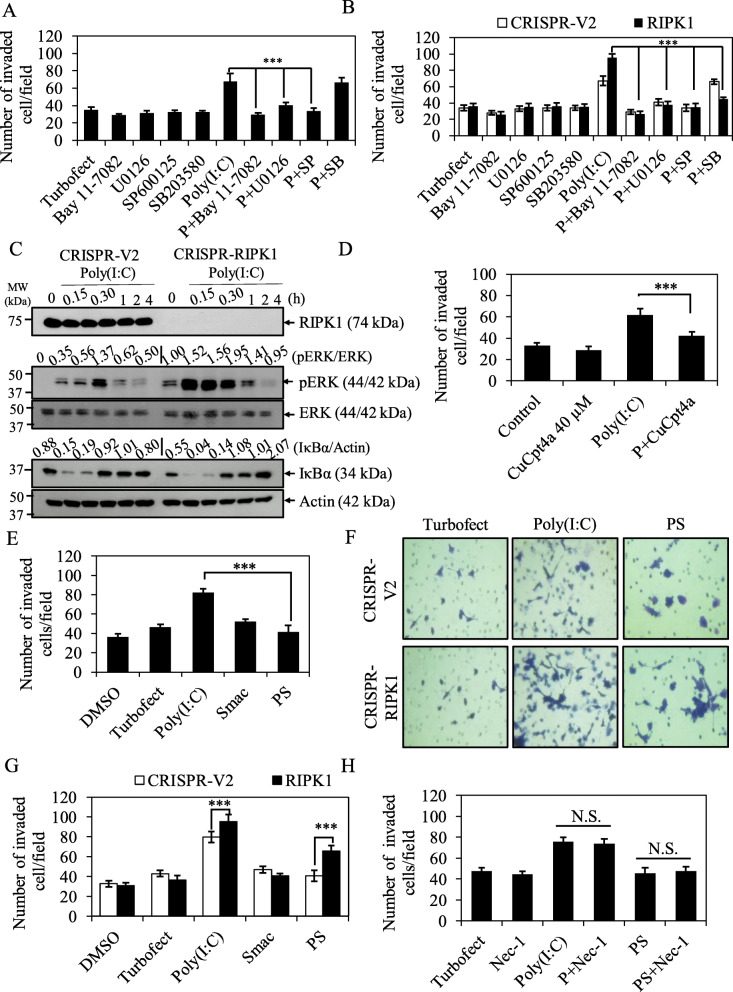Fig. 6.
Smac mimetic reverses TLR3 ligand, Poly(I:C)-induced invasion in CCA cells. a KKU213 cells were pretreated with 10 μM Bay11–7082, 10 μM U0126, 20 μM SP600125 or 10 μM SB203580 for 30 min followed by transfection with TurboFect or 2.5 μg/ml Poly(I:C) for 12 h and then subjected to invasion assay. b CRISPR-V2 and CRISPR-RIPK1 KKU213 cells were treated as in (a) for 12 h and then subjected to invasion assay. c KKU213 cells were transfected with TurboFect or 2.5 μg/ml Poly(I:C) for indicated time points and cell lysates were collected, after that RIPK1, pERK, and IκBα were analyzed by Western blot analysis. Total ERK and β-actin were served as loading control. Data shown was a representative of two independent experiments. d KKU213 cells were pretreated with DMSO control or TLR3 inhibitor, CuCpt4a for 1 h followed by transfection with TurboFect or 2.5 μg/ml Poly(I:C) for 12 h and then subjected to invasion assay. e KKU213 cells were pretreated with 5 nM Smac mimetic for 2 h followed by transfection with 2.5 μg/ml Poly(I:C) for 12 h and then subjected to invasion assay. f Representative images of CRISPR-V2 and CRISPR-RIPK1 invaded cells stained with crystal violet. g Quantification of number of CRISPR-V2 and CRISPR-RIPK1 KKU213 invaded cells treated with 5 nM Smac mimetic, 2.5 μg/ml Poly(I:C) alone or the combination treatment for 12 h. h KKU213 cells were pretreated with RIPK1 inhibitor (Nec-1) with or without 5 nM Smac mimetic followed by transfection with 2.5 μg/ml Poly(I:C) for 12 h. Number of invaded cells were counted. Data from three independent experiments was presented as mean ± S.D.; * p < 0.05, **p < 0.01, *** p < 0.001, n.s. = not significant

